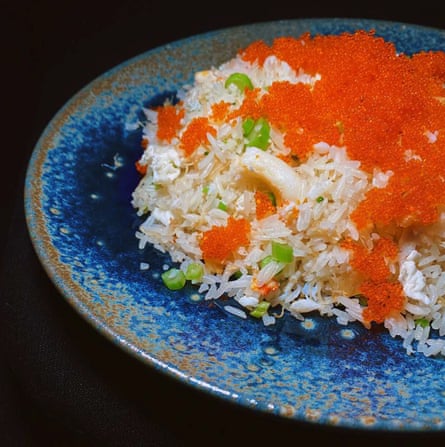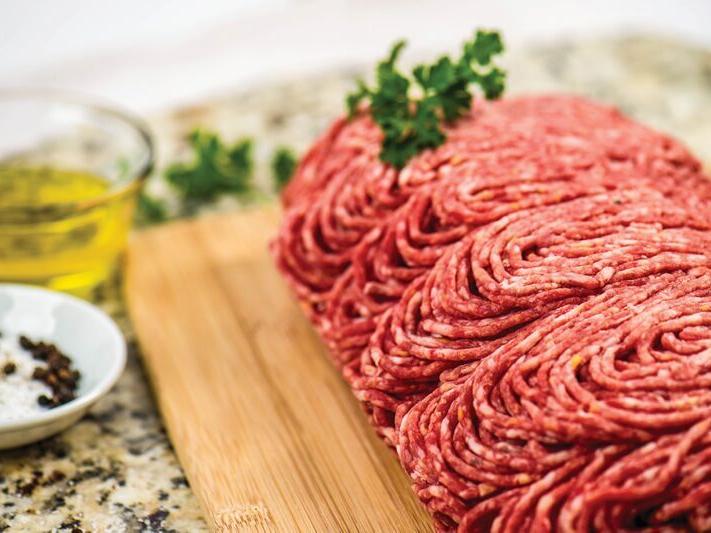We had such an amazing response to our first book and when we went into a second lockdown, Jo and I wanted to collaborate further. These recipes are mostly based on day-to-day ingredients, and a little more left-of-centre. We’ve combined recipes that are easy to throw together on a weeknight, and slightly more elaborate dishes for when time is on your side.
We also wanted to feature dishes and ingredients that hold personal significance to us. Not being an “established” chef or expert on Chinese cuisine, it felt more authentic to simply write what I knew. We figured that the Isol(Asian) Cookbook series could be a reflection of us as creatives, and as Asian Australians.

Serves 4
This is a really cool recipe from Hunan, which happens to be where Jo is from. Eggs are hard-boiled, sliced, shallow-fried and then stir-fried with spicy, salty aromats, so named for their resemblance to gold coins.
The technique of shallow-frying the cooked eggs releases the proteins into the oil, forming a super-frothy base for the sauce. Ideally, you’ll be able to track down and use chilli broad-bean paste and salted black beans for this recipe. They’re both available from the dry-goods section of Asian supermarkets. If you’re lucky, a well-stocked regular supermarket may have them too.
Please do not attempt to substitute jarred black-bean sauce for salted black beans. If you are unable to find either of these ingredients, please substitute 1 tbsp light soy sauce, ½ tsp chilli powder and 1 tbsp chilli oil in their place.
4 eggs
2 garlic cloves, minced
2cm ginger, minced
1 long red chilli, sliced into rounds
3 spring onions, sliced, white and green parts kept separate
1 tbsp shaoxing wine
1 tbsp water
½ tsp sugar
1 cup cornstarch
½ cup vegetable oil
½ tbsp salted black beans
1 tbsp chilli broad-bean paste (doubanjiang)
Hard boil the eggs for seven to eight minutes and shock in iced water. When cold, peel the eggs and pat dry.
Using a wet knife, slice the eggs into 2cm rounds (as you would for a salad), continuing to wet your knife as you work to help achieve clean slices. Dust each of the egg slices thoroughly with cornstarch and set aside. The cornstarch helps the egg yolk stick to the whites when frying, so be generous and pat the starch on the eggs liberally.
In a wok or frying pan, heat the oil until smoking, and fry the eggs in a single layer, turning only once. The eggs should be crisp and golden on both sides. Remove from the pan and keep aside.
In the same pan, sauté the ginger, garlic and spring onion whites until aromatic. Add the salted black beans and chilli broad-bean paste, and continue to fry at a medium heat.
Add the sugar, water and shaoxing wine and fry until fragrant. Add the eggs back into the pan along with the sliced chillies. Stir gently to combine, then spoon onto a plate.
Sprinkle with the green sliced spring onion and serve immediately.

Serves 4
I had a theory. If you were to put chicken through the same, three-day process as Nashville hot chicken – brining, buttermilk brining, then dredging – but swap the cayenne/paprika/onion/garlic for a deeply aromatic, northern Chinese spice mix … it could be pretty good. While we’re at it, why not use the Korean technique to dredge and fry the chicken too? That could be really good.

It wasn’t good. It was utterly glorious. The potato starch dredge became an incredibly light and crispy – not hard and crunchy – coating. The double-frying technique was so effective that the chicken was still crispy the next day. The intensity of the spices in the buttermilk brine penetrated right into the chicken for perfectly seasoned, tender bites. Then, of course, there was the spice mix. That magnificent spice mix. The warm, roasty aromas of cumin, golden garlic and chilli bring you right to the smoky back alleys of Beijing, where this same spice mix is dusted on crisp, charcoal-roasted meats.
I also managed to cut a whole day out of the traditional hot chicken process, condensing it down to two steps. On day one, you make the buttermilk brine and submerge the chicken in it. On day two, you dredge and fry. The spiciness of your chicken can be adjusted to your personal preference, as the chicken is well-seasoned even before you coat it in the chilli oil and spice mix.
When I make fried chicken at home, I always do half plain, half spicy, so it’s not all pain and suffering. I ate my fried chicken between two slices of fluffy white bread, with tiny pickled green chillies, mayo and a wedge of lettuce to cool the burn. How you choose to eat yours is entirely up to you.
Day 1
Buttermilk brine
8 chicken thighs, boneless and skinless
1L buttermilk
2 tbsp salt
2 tsp chicken bouillon powder
1 tsp garlic powder
2 tbsp Sichuan chilli powder
In a large bowl or container, combine the buttermilk, salt, chicken bouillon powder, garlic powder and Sichuan chilli powder. Ensure the container is deep enough that the chicken will be completely submerged. Place the chicken thighs into the buttermilk brine, cover and refrigerate for 24 hours – or at least 12.
Day 2
Dredge
1½ cups potato starch
½ cup plain flour
1 tsp ground black peppercorns
2 tsp salt
Beijing spice mix
3 tsp cumin seeds
2 tsp white peppercorns
1 tsp Sichuan peppercorns
1 tsp garlic powder
2 tsp Sichuan chilli powder
½ tbsp chilli flakes
2 tbsp chilli oil
Vegetable oil for deep-frying
Toast the white and Sichuan peppercorns and cumin seeds in a small frying pan over low heat, keeping the pan moving so that the spices toast evenly. When the spices are lovely and aromatic, add the garlic powder, Sichuan chilli powder and chilli flakes and toast gently for 30 seconds. Leave the spices to cool, then grind into a coarse powder.
Make the dredge by combining the potato starch, black pepper powder and salt in a large bowl.
Heat oil to 160°C in a large, heavy-bottomed pan at least to 6cm deep. Lift each piece of chicken out of the buttermilk and tap off the excess. Thoroughly dredge the chicken in the potato starch and carefully lower into the oil. Fry the chicken in batches, making sure the pieces don’t overlap and ensuring they don’t stick to the bottom of the pan. Fry for five to six minutes, just until the crust is set. Transfer to a wire rack to rest while the remaining chicken is fried.
Once all of the chicken has been fried once, fry the chicken in batches a second time until the coating is extra crispy – six to seven minutes. Potato starch does not turn brown as plain flour does, so don’t attempt to fry it until golden. When you tap the coating and it is hard and crisp, it is ready to come out and rest on a wire rack.
Add 2 tbsp of the spice mix to a heatproof bowl, and mix in half a cup of the hot frying oil with 2 tbsp chilli oil and 1 tsp salt. Add a couple of pieces to the bowl at a time and toss to coat. Return to the wire rack and sprinkle liberally with the remaining spice mix. Serve hot.

Serves 4
Billionaire fried rice, “big shot fried rice” or “generosity fried rice” is a fixture at high-end Chinese banquets. It is named for the mysterious Hong Kong billionaire who is credited with its creation, and to denote the prestige of the dish – in case anyone missed the $$$ reference. This is a fried rice like no other, with golden shreds of scallop peeking through glossy rice grains, surrounded by soft clouds of egg white and little orange bursts of roe. This is the Rolls-Royce of fried rice, and it uses only a handful of ingredients.
The star of this dish is conpoy, or dried scallops – a luxury ingredient in Cantonese cooking, and notoriously expensive. These little nuggets pack an incredibly concentrated oceanic-umami flavour, and are the key component in XO sauce.

Lucky for us non-billionaires, they are available in various sizes and grades, and with dehydrated seafood, a little goes a long way. The smaller sizes will do just fine in this recipe, but ensure they aren’t too hard and dry. A completely acceptable and affordable quality can be found in most Asian grocers in vacuum-sealed bags. The scallops need to be rehydrated overnight before use, so ensure you read this recipe from start to finish before you start cooking. You can up the ante by adding other luxe ingredients to this dish such as cooked lobster, crab and other fish roes, but the dried scallop should be front and centre.
I cannot reiterate enough that you need day-old rice to achieve a proper fried rice. Your rice grains must be dry and hard to be able to fry, and for the grains to separate and fluff up with the heat of the pan. Freshly cooked rice will introduce too much moisture to the pan and you will end up with a stodgy disaster. Cook the rice the night before when you are prepping the scallops.
The night before – rehydrating the dried scallops
5-6 dried scallops
2 cups water, room temperature
1 tsp Shaoxing wine
Submerge the scallops in the water and wine overnight to rehydrate. Cover and leave in the fridge, or on the bench if your kitchen is cool.
The next day, drain the scallops and pat dry. Shred the scallops into smaller pieces and keep aside.
On the day
2 cups cold, cooked rice (break up any clumps before cooking)
3 egg whites
1 tsp salt
4 tbsp vegetable oil
Prepared shredded scallops
5 gai lan or broccolini stems, sliced into rounds (retain leaves/tops for other dishes)
Optional:
15g Tobiko/flying fish roe
60g cooked crab meat
Heat 1tbsp of oil in a wok or pan on medium heat, and toast the shredded scallop until golden. Remove from the pan and keep aside.
Add the remaining 3tbsp of oil to the pan and heat on medium-high until smoking. Add the egg whites and quickly stir to scramble. Add the rice and toss to combine, incorporating the egg white through the rice. Continue to stir-fry the rice and egg on medium-high heat until the rice begins to soften.
Add the gai lan stems and fried scallop threads, and continue to cook over medium-high heat until the rice grains become hot and fluffy. If using crab meat, add it now.
Once the rice is fluffy and the gai lan stems are a bright jade green, add the salt and toss to combine. Transfer to a plate and top with roe, if using. Serve immediately.
The Link LonkAugust 29, 2020 at 07:28AM
https://ift.tt/32Ba1dq
Isol-Asian cooking: lockdown recipes from golden coin eggs to Beijing fried chicken - The Guardian
https://ift.tt/38mRq7q
Fried Chicken

No comments:
Post a Comment